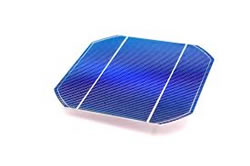New Solar Cell Device Surpasses Theoretically Predicted Efficiency Limit
 Thomas Burton for Energy Technology Matters: A team of researchers at the Massachusetts Institute of Technology (MIT) published a paper last week in the journal Nature Energy that described how they built a working solar thermophotovoltaic device (STPV) that enables solar cells to break through a theoretically predicted ceiling on how much sunlight they can convert into electricity. With this revolutionary new technology, the researchers show the potential of how solar panels can generate even more energy than theoretically determined by harnessing some of the panels’ waste. To learn more about the STPV technology, read on!
Thomas Burton for Energy Technology Matters: A team of researchers at the Massachusetts Institute of Technology (MIT) published a paper last week in the journal Nature Energy that described how they built a working solar thermophotovoltaic device (STPV) that enables solar cells to break through a theoretically predicted ceiling on how much sunlight they can convert into electricity. With this revolutionary new technology, the researchers show the potential of how solar panels can generate even more energy than theoretically determined by harnessing some of the panels’ waste. To learn more about the STPV technology, read on!
Since 1961, the Shockley-Queisser Limit established an absolute theoretical limit on traditional solar cell efficiency regarding energy conversion. A single-layer of silicon cells—the type of cells most widely used in today’s solar panels—has an upper limit of 32 percent. But currently, researchers are studying ways to increase this overall efficiency by using multiple layers of cells or converting the sunlight first to heat before generating electrical power. This latter method uses devices called STPVs, which the MIT team used in their study. Cont'd...
Comments (0)
This post does not have any comments. Be the first to leave a comment below.
Featured Product

